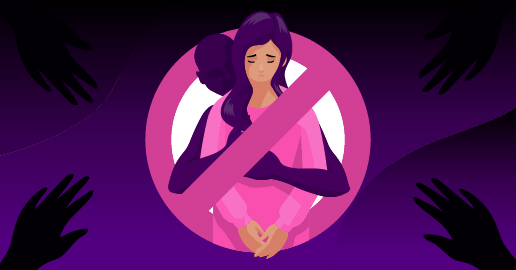The Sexual Harassment of Women at the Workplace (Prevention, Prohibition and Redressal) Act), 2013 (“PoSH Act”), considers Sexual Harassment at the Workplace to be a violation of a woman’s right to equality, life, and liberty, recognizing it as a means to a hostile work environment discouraging women from joining the workforce. In the long run, it adversely impacts the social and economic status of women in India - a society largely ruled by patriarchal belief systems.
Genesis of the PoSH Act
In 1997, women activists under the banner of Vishaka, filed a Public Interest Litigation in the Supreme Court, after Bhanwari Devi, an activist who fought against the evils of Child Marriage in Rajasthan, was brutally gang raped by villagers to stop her work. The case highlighted the risks that women faced at workplaces and paved the way for the celebrated “Vishaka Guidelines” calling for action by employers to prevent sexual harassment at workplaces until a legislation was established.
It was only 15 years later that the Parliament passed the PoSH Act, mandating the establishment of Local Committees at District Levels and Internal Committees by employers of the organized sector to address complaints of Sexual Harassment while mandating sensitization among employees.
The existing arguments supporting the women centrality of the PoSH Act are briefly summarized below.
1. A higher percentage of women are still victims of gender-specific violence.
Throughout history, women have been the primary victims of sexual violence. An examination of the origins of penal provisions for sexual crimes against women reveals that even today, women continue to bear a disproportionately higher percentage of such crimes. While some argue that the Indian Penal Code dates back to 1860, the necessity for the 2013 Criminal Amendment, which introduced Sections 354A to 354D, 375 to 376E, became evident in the aftermath of the Nirbhaya Case, underscoring the need for legislation focused on women's protection.
The #MeToo movement, which emerged in 2018, shed light on the harsh reality of sexual harassment, even among the elite in society. Globally, Sexual Harassment in the Workplace has been recognized as a gender-specific crime affecting women disproportionately. For instance, General Recommendation No. 19 (1992) by the United Nations Committee on the Convention on the Elimination of Discrimination Against Women specifically identifies Sexual Harassment at the Workplace as a form of gender-based violence that hampers gender equality in the workplace.
While it's essential to acknowledge that people of all genders can experience sexual harassment, the prevailing traditional power dynamics continue to victimize a larger percentage of women in our society (as noted in the 239th Parliamentary Standing Committee Report). This is further supported by the 2021 NCRB data, which recorded a total of 4,28,278 reported cases of crimes against women in 2021, marking a 15.3% increase from 2020. The report indicates that the crime rate per lakh women population was 64.5 in 2021, compared to 56.5 in 2020. Shockingly, the data also suggests that a woman faces sexual harassment in India every 12 minutes.
2. Gender Disparity in the Workforce
As of 2022, the estimated Labor Force Participation Rate for women stands at 32.8%. Additionally, data reveals that women hold less than 5% of chief executive or management positions in companies listed on the National Stock Exchange. These statistics clearly indicate that women are a minority in the workplace, leaving them more susceptible to experiencing workplace harassment in various forms.
3. Risks in Certain Sectors
According to a Human Rights Watch report, women working in the informal sector endure daily instances of sexual harassment and assault. However, their economic circumstances, often characterized by poverty, force them to persist in these jobs despite the risks they face. The urban perspective on sexual harassment tends to focus on isolated incidents, failing to grasp the full extent of the issue. This limited view ignores certain sectors, particularly in rural areas, where women's safety is inherently compromised and poses a risk to them in general.
4. Limited Representation
The PoSH Act was enacted to address the gaps in existing legislation and protect the rights of working women. It was introduced during a time when there was minimal representation to address the grievances of women in workplaces, leading to societal embarrassment and job loss for many. Over the past decade, the PoSH Act has played a crucial role in empowering women to speak out against the sexual harassment they face at work.
However, in a recent case (Aureliano Fernandes vs. State of Goa and Others), the Supreme Court highlighted serious lapses in the enforcement of the Act despite its establishment for over a decade. The Court acknowledged the victimization caused by acts of sexual harassment and its detrimental impact on a woman's self-esteem, emotional well-being, mental health, and physical health. It also noted that many women are reluctant to report such misconduct, and some even end up leaving their jobs as a result.Despite the enactment of the PoSH Act, social and economic conditions in India have not improved to the extent that would ensure safe workplaces for women without legislative intervention. Given the prevailing circumstances, discussions to amend the PoSH Act to become a gender-neutral legislation would be premature and may not adequately address the specific vulnerabilities and challenges that women continue to face in the workplace. It remains essential to focus on strengthening the implementation of the existing Act and ensuring its effective enforcement to provide a safer working environment for women.
Disclaimer : No information contained in this website may be reproduced, transmitted, or copied (other than for the purposes of fair dealing, as defined in the Copyright Act, 1957) without the express written permission of Rainmaker Online Training Solutions Pvt. Ltd.











